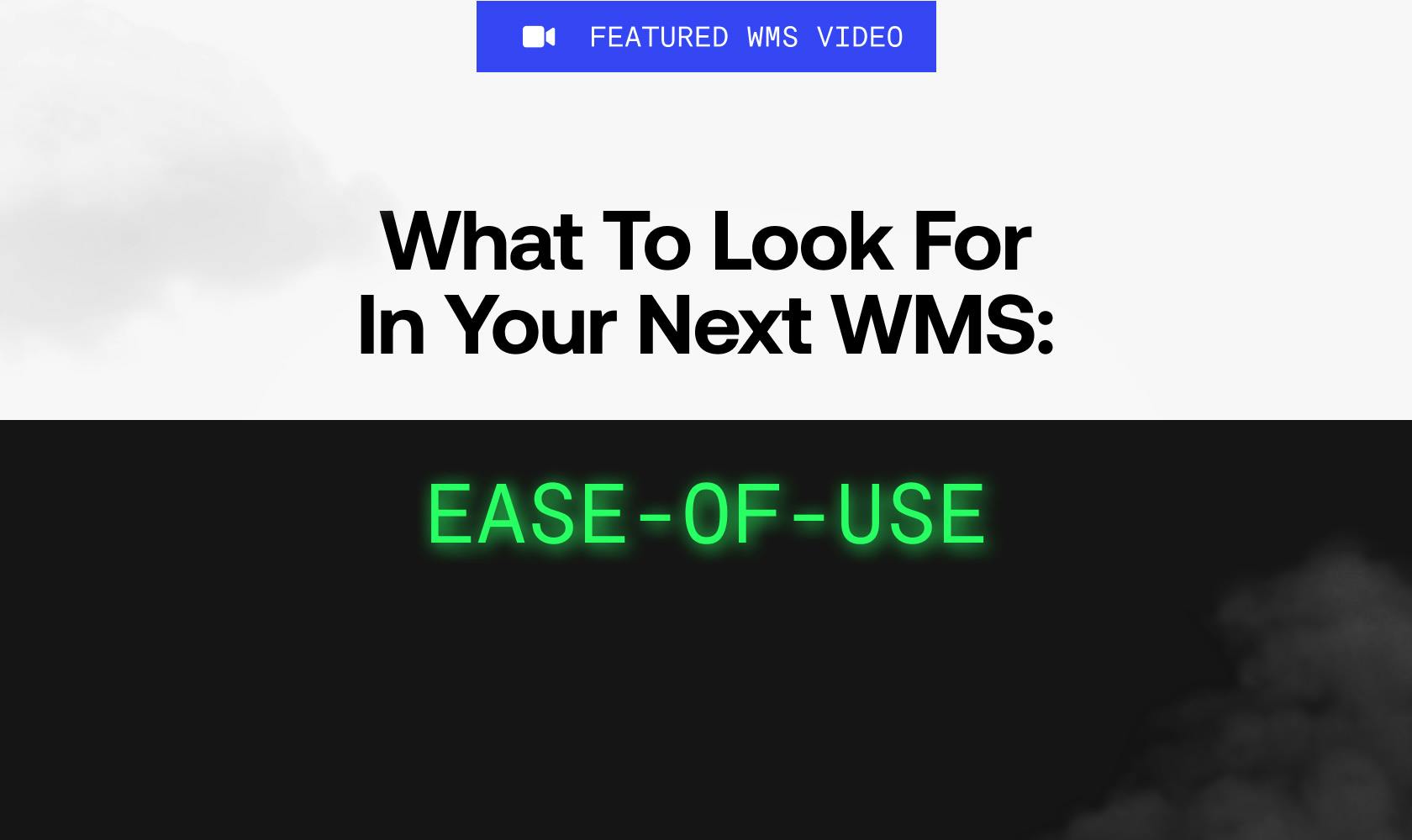This is the second in a series of What to Look For in Your Next Warehouse Management Systems. Prior posts have covered the power of rapid onboarding.
How much water have you drunk today? Are you getting enough sleep? If you can’t answer those questions or are confused why you are reading that, you might need to go back and read our first blog post in this series “What to Look For in Your Next WMS: Rapid Onboarding.”
Now that our self-care and housekeeping is done, let’s dive deeper into the capabilities your next warehouse management system needs (WMS) needs in order for you to be successful.
In the above brief video, our in-house WMS team goes beyond why being able to rapidly onboard your team is key, and explores the importance the user interface of your warehouse management system (which directly impacts ease-of-use) plays in your workforce productivity and employee retention.
Overly Complicated Design
Many traditional WMS on the market are extremely convoluted, designed by developers with no real “on-the-warehouse-floor” exposure.
“Warehouse management systems…can be very convoluted, very hard to learn”
This means the WMS is option-rich but confusingly convoluted to the end user - your warehouse associate. And this slows processes, and worse, creates unintended fulfillment errors.
Businesses are burdened with either lengthy training schedules or hope their warehouse associates are invested and will endure the months and months of effort to overcome this steep WMS learning curve.
K.I.S.S. (Keep It Simple, Stupid) Method
Instead, a modern WMS must have a dedicated focus on the warehouse employees' experience and present only the most crucial information -- and deliver it in an easily comprehensible fashion. The best systems deploy helpful images to help associates properly pack and hit brand guidelines as well as proper packaging protocols including kitting, dunnage, and more.
“Modern WMS should provide you up front with the most vital order information. Where is it going? How fast does it need to get there?”
Think of it like this, if Instagram had 30 options and another 40 hidden behind that just to post a photo, the app would never have become a massive success. The same is true for your WMS - if it isn’t built to benefit the primary user, it will fail you.
So while your WMS must easily provide the reporting and inventory visibility leadership requires, it must also work just as easily for the warehouse associate to ensure effective fulfillment and employee retention.
Front Line and Last Line
Your WMS and the associates that work to fulfill every package are the front line of your customer experience. Empowering them with technology that improves their lives, efficiencies, and accuracy is a critical investment for any business. Your WMS also forms the last line in your fulfillment process as it can either make or break the effectiveness of your pack station and labeling process.
So, up next in our series, What To Look For In Your Next WMS, we look at the benefits the pack station can deliver with a modern WMS.
Ease-of-Use Video Recap
Tony Scharff: Is it intuitive? Is it easy-to-use?
During picking, there's too much going on in the UI, and it confuses associates. Either by causing mispicks or overpicking.
Alisha Lehew: Warehouse management systems can be very convoluted, very hard to learn. You have to go through standard operating procedures.
You have to really take a lot of time and dig in through it, and it takes months and months to learn them inside and out.
Tony Scharff: Modern WMS should provide you up front with the most vital order information. Where is it going? How fast does it need to get there?
Alisha Lehew: If you can't make something that's easy for everybody to use, then you're gonna have a hard time having people buy into it and want to stay there.
Tony Scharff: And not only making it more functional, but streamlining it, making it easy-to-use and intuitive for the packer.







